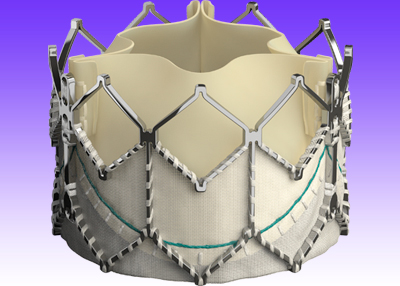Original Title: Transcatheter Replacement of Failed Bioprosthetic Valve. Large Multicenter Assessment of the Effect of Implantation Depth on Hemodynamics after Aortic Valve-in Valve.
Reference: Matheus Simonato, et al. Circ. Cardiovasc. Interv 2016;9:e003651
Courtesy of Dr. Carlos Fava.

Transcatheter valve implantation inside a failed surgical bioprosthetic valve (V-in-V) could eventually solve this problem, but its evolution and exact implantation depth continues to raise questions.
The study analyzed 292 high risk consecutive patients form the International V-in-V (VIVID) registry.
The purpose of this study was to determine optimal implantation depth for the best hemodynamic outcome, defined as <20 mmHg gradient.
Mean age was 78.9 years with more than 90% patients with symptomatic dyspnea in FC III-IV. Bioprosthetic valves had failed approximately 10 after procedure, caused by:
- stenosis, 40%
- mixed factors, 35%
- regurgitation, 25%
From the total number of patients, 157 received the CoreValve and 135 the Sapiens XT.
High implantation depth was associated to lower rates of post implantation elevated gradients compared to low implantation depth, and this was true for both valves:
CoreValve Evolut
- High implantation depth 15%
- Low implantation depth 34.2%
p=0.03
Sapiens XT
- High implantation 18.5%
- Low implantation 43.5%
p=0.03
Implantation depth was a strong predictor of post implantation gradient.
Conclusion
High implantation, both for CoreValve and Sapiens XT ─ inside a failed surgical valve ─ is a strong independent predictor of satisfactory hemodynamic outcomes.
Editorial Comment
V-in-V is a significantly less invasive strategy that solves stenosis or failure of bioprosthetic surgical valves.
To meet its increasing demand and optimize results requires that we master this implantation technique.
Courtesy of Dr. Carlos Fava. Favaloro Foundation, Buenos Aires, Argentina.
We value your opinion. You are more than welcome to leave your comments, thoughts, question or any ideas here below.





